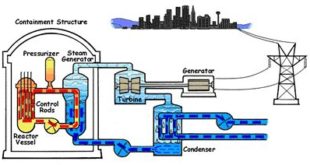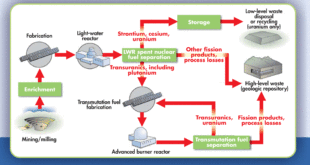The United States remains the world’s top weapons seller, accounting for 34 percent of global arms sales over the past five years. Russia was the second-largest exporter with about 20 percent of all global arms deliveries, the Stockholm International Peace Research Institute (SIPRI) reported on March 11 in its latest overview of global weapons transfers.
The U.S. share of arms sales is up from 30 percent recorded in the 2008-12 period, SIPRI said. “Based on deals signed during the Obama administration, U.S. arms deliveries in 2013–17 reached their highest level since the late 1990s,’ said Aude Fleurant, director of the SIPRI Arms and Military Expenditure Program. U.S. arms went to at least 98 countries, with a large portion of U.S. exports consisting of combat and transport aircraft, SIPRI said.
Russia was the world’s second biggest arms exporter across 2012–16. The research group said Russia exported weapons to 47 countries as well as to rebel forces in eastern Ukraine, where Moscow-backed separatists are fighting the central government in Kyiv. But 70 per cent of those sales relied on just four countries — India, Vietnam, China and Algeria. Overall, Russian arms sales fell 7 percent from the previous five-year period.
China’s share of global arms exports rose from 3.8 percent to 6.2 percent from 2012 to 2016 as the country became the third-largest weapon supplier in the world after the U.S. and Russia. China’s arms exports have been criticized for lacking global appeal since 72 per cent of all exports in the last five years went to just three countries: Pakistan, Bangladesh and Myanmar.
China has been successful in diversifying its customer base and now exports arms to 55 countries worldwide, covering Asia, the Middle East, Africa and Latin America. Many of China’s clients are indeed developing countries. For example, two-thirds of the countries situated in the world’s poorest continent, Africa, procure weapon systems from China, and much of it is basic military equipment.
Israel is the 7th largest exporter of weapons in the world, according to the SIPRI report. Over the past five years, the export of Israeli weapons systems climbed by 55 percent compared to the five years that preceded it, which is the biggest increase among the top 10 arms exporters. Almost half (49%) of Israeli weapons exported from 2013 to 2017 went to India, 13% to Azerbaijan and 6.3% to Vietnam. Israel is also the third-largest arms provider for South Korea, Italy and Britain.
In January, the Australian government launched its new Defence Export Strategy, which aims to turn Australia into one of the world’s top 10 arms exporters. The strategy will raise government assistance for arms exports, making Australia more like Britain and other major arms-exporting states.
US Export Strategy
As the world’s leading producer, consumer, and exporter of high-end weaponry, the United States has long used arms sales to influence smaller states, manage regional arms races, encourage allies’ inter-operability, and contain rivals’ capabilities, as well as to support its own defense industrial base and broader economy. It equips foreign militaries not only to defend themselves, but to use hardware in common with the United States, making joint operations easier.
The U.S. State Department in 2018 launched new weapons export policy, “a whole-of-government effort to expedite transfers” that support U.S. foreign policy and national security objectives, according to the State Department. The changes, first rolled out in April, are aimed at expanding sales to allies, bolstering the American defense industry and creating jobs at home.
The administration is now poised to expand this effort in what officials have described as a “whole of government” push, easing export regulation and oversight to increase arms sales around the world. This “Arms Transfer Initiative” fits neatly into Trump’s broader efforts to create manufacturing jobs in the United States. In this spirit, the administration has already reversed Obama-era human rights-related restrictions on arms sales to Saudi, Bahrain, and Nigeria.
Russia Export Strategy
While for Russia, because of sanctions, selling arms and military equipment to generate revenue and extend production runs for its defense industry, has become important it is erroneous to claim that this in the central driver behind Russia’s arms trade.
Russia views its military exports as a major tool for achieving its national security interests, particularly, in the East Asia and the Middle East. The arms trade is an integral part of its image as a world power, a critical part of its relationship with other states in Asia, a central element in its defense and security agreements, and an essential component of its ability to obtain and maintain access to influence and resources in regions of interest.
Russia seeks to maintain and expand its status as a world power, and views the focused, purposeful export of its military technologies to key countries as a fundamental tool in achieving this.
China Export Strategy
China has also adapted, innovated and engaged in systems integration in a determined bid to move up the technology ladder, developing, for instance, credible and competitive unmanned aerial vehicles (UAVs) and anti-ship cruise missiles. Raised technological sophistication combined with relatively low procurement cost has led to increasingly cost-effective arms exports.
Experts point out that rather than export revenue, Beijing’s end-game is longer-term geo-political and strategic influence. The search for regional and global influence is the critical aim of Chinese economic diplomacy. It reflects a more narrowly focused aspect of Beijing’s soft power framework, embracing foreign aid, foreign direct investment, overseas educational programs and, importantly, arms sales.
China’s arms export model operates according to a carefully-crafted strategy based on three principles: promoting the legitimate self-defence capability of the recipient country; strengthening the peace, security and stability of that country and region; and non-interference in its internal affairs.
Beijing’s long-standing approach of linking non-interference to arms sales rests on the view that a customer’s political, military and human rights record lies outside the contractual arrangements. The ‘no questions asked’ policy particularly appeals to second- and third-tier military states suffering excessive dependence on US or Russian weaponry. Chinese arms offer poorer states the opportunity to diversify arms sources, regain a degree of sovereignty over military capability and reduce strategic vulnerability to arms embargoes. Their attractiveness to more discerning buyers has been translated into a sales portfolio in which 25 per cent of China’s customers are now positioned in the upper middle/higher income country categories, including Turkey, Saudi Arabia and the United Arab Emirates.
In the past, Chinese helicopters have suffered from reliability issues which led to negative connotations of the “Made in China” label has on its military equipment. The Bolivian Army found that their newly ordered Chinese H425s had defective parts. In Cambodia, a Z-9 crashed, killing two of their generals. Even if the official reports blame pilot error, the seeds of doubt remain.
In Oct 2018, Chinese Xinhua news agency reported that the Chinese AVIC Z-19E attack helicopter is ready for series production. Designed for export, it was emphasized that it “has undergone professional scrutiny regarding tests and passed verifications, demonstrating the model is capable of entering the production phase.” AVIC further highlighted that it has “undergone a comprehensive test for the adaptation of the model as a whole and for its fire control system, subsequently passing test verification and flight performance.” The emphasis AVIC placed on the helicopter passing these tests reflects China’s efforts to distance itself from the negative connotations of the “Made in China” label.
Australia Export Strategy
Given the relatively small domestic requirement to supply the Australian Defence Force, exports are critical in expanding and lifting the global competitiveness of the industry. This is important not only for business, but also for the industry’s ability to deliver even more competitively to the ADF. It has identified a number of “priority markets”: the Middle East, the Indo-Pacific region, Europe, the United States, the United Kingdom, Canada and New Zealand.
It will set up a new Defence Export Office to work hand in hand with Austrade and the Centre for Defence Industry Capability to coordinate the commonwealth’s whole-of-government export efforts and provide a focal point for more arms exports. A $3.8bn Defence Export Facility, to be administered by the Export Finance and Insurance Corporation, will provide the finance local companies need to help them sell their defence equipment overseas.
A new Australian Defence Export Advocate position, set up to support the Australian Defence Export Office, will provide industry with the constant high-level advocacy needed to promote Australian-made weapons overseas. “It is an ambitious, positive plan to boost Australian industry, increase investment, and create more jobs for Australian businesses,” Turnbull said. “A strong, exporting defence industry in Australia will provide greater certainty of investment, support high-end manufacturing jobs and support the capability of the Australian defence force.”
References and Resources also include:
http://www.eastasiaforum.org/2017/09/27/the-end-game-of-chinas-arms-export-strategy/
https://warontherocks.com/2018/04/americas-arms-sales-policy-security-abroad-not-jobs-at-home/
 International Defense Security & Technology Your trusted Source for News, Research and Analysis
International Defense Security & Technology Your trusted Source for News, Research and Analysis


